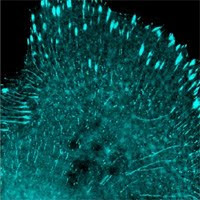The
enthusiasm of using autologous induced pluripotent stem cells (iPSCs)
for cell replacement therapy was dampened by a publication 2 years ago
in Nature (Zhao et al, 2011), which suggested that even syngeneic
(genetically identical) iPSCs could still invoke strong immune rejection
because, as the authors in Yang Xu’s lab at UCSD explained, the iPSCs
overexpress a number of tumor antigens possibly linked to genomic
mistakes acquired during reprogramming. Embryonic stem cells (ESCs), on
the other hand, did not show similar rejection problems in the same
studies, indicating that the immune responses were due to somatic
reprogramming.
If
proven true, the iPSC-specific immune rejection would have been the
biggest hurdle for any iPSC-inspired clinical plans. Naturally, a number
of labs performed series of experiments that were aimed at addressing
the concerns raised by Zhao et al. This month in Cell Stem Cell,
researchers from Ashleigh Boyd’s lab at Boston University demonstrated
that autologous (self) or syngeneic iPSCs or their derivatives were not
rejected (Guha et al. 2013). These iPSCs behaved essentially the same
as ESCs in transplantation settings. When immunogenicity was measured
in vitro by monitoring T cell responses in co-culture, no immune
response was observed either. In contrast, cells and tissues from
allogeneic (genetically different) iPSCs were rejected immediately.
In
light of this new publication and an earlier Nature paper (Araki et al.
2013), Kaneko and Yamanaka have commented that autologous iPSCs still
seem to have a very good chance of being used in cell replacement
therapy, pending, of course, additional research and trial results. In
their Preview article in Cell Stem Cell (Kaneko and Yamanaka 2013) two
points were particularly emphasized: 1) autologous iPSCs are preferred
because of the lack of immune rejection; 2) iPSCs generated with
footprint-free reprogramming technologies are preferred because the
problems reported by Zhao et al 2011 might be correlated with the use of
retroviral vectors (even though they also used episomal
plasmid-reprogrammed iPSCs). We strongly support both of these points
and believe that they point out the direction of future stem cell
therapies.
However,
we do not agree with the last statement by Kaneko and Yamanaka in that
article stating that as a result of the cost and time required to
generate iPSC lines from each patient in GMP facilities, iPSC lines from
HLA homologous donors will be the choice going forward to clinical
applications. First of all, HLA-matched iPSCs should be closer to
allogeneic than to autologous iPSCs. From what we just learned in the
last round of debates, the field should certainly go with autologous.
Second, generating foot-print free iPSCs may already not be the
rate-limiting step, even in GMP protocols, compared to downstream
differentiations that are required using any pluripotent stem cells. We
have shown that human fibroblasts can be reprogrammed in a completely
feeder-free, xeno-free, passage-free process, using only mRNAs, in just
over a week, achieving sometimes “bulk conversion”—converting nearly all
cells within a well into iPSCs (Warren et al. 2012). We have drawn up a
plan to establish cGMP protocols and to quickly apply autologous,
footprint-free iPSCs to clinical programs through partnerships. The
field can move at a faster speed, with all due scientific vigor and
caution, if the best technology available is chosen for building the
foundation.
Zhao, T., Z.N. Zhang, Z. Rong, and Y. Xu, Immunogenicity of induced pluripotent stem cells. Nature, 2011. 474(7350): p. 212-5.
Guha, P., et al., Lack of immune response to differentiated cells
derived from syngeneic induced pluripotent stem cells. Cell Stem Cell,
2013. 12(4): p. 407-1Kaneko, S. and S. Yamanaka, To Be Immunogenic, or Not to Be: That’s the iPSC Question. Cell Stem Cell, 2013. 12(4): p. 385-6.
Araki, R., et al., Negligible immunogenicity of terminally differentiated cells derived from induced pluripotent or embryonic stem cells. Nature, 2013. 494(7435): p. 100-4.
Warren, L., Y. Ni, J. Wang, and X. Guo, Feeder-free derivation of human induced pluripotent stem cells with messenger RNA. Sci Rep, 2012. 2: p. 657.




No comments:
Post a Comment